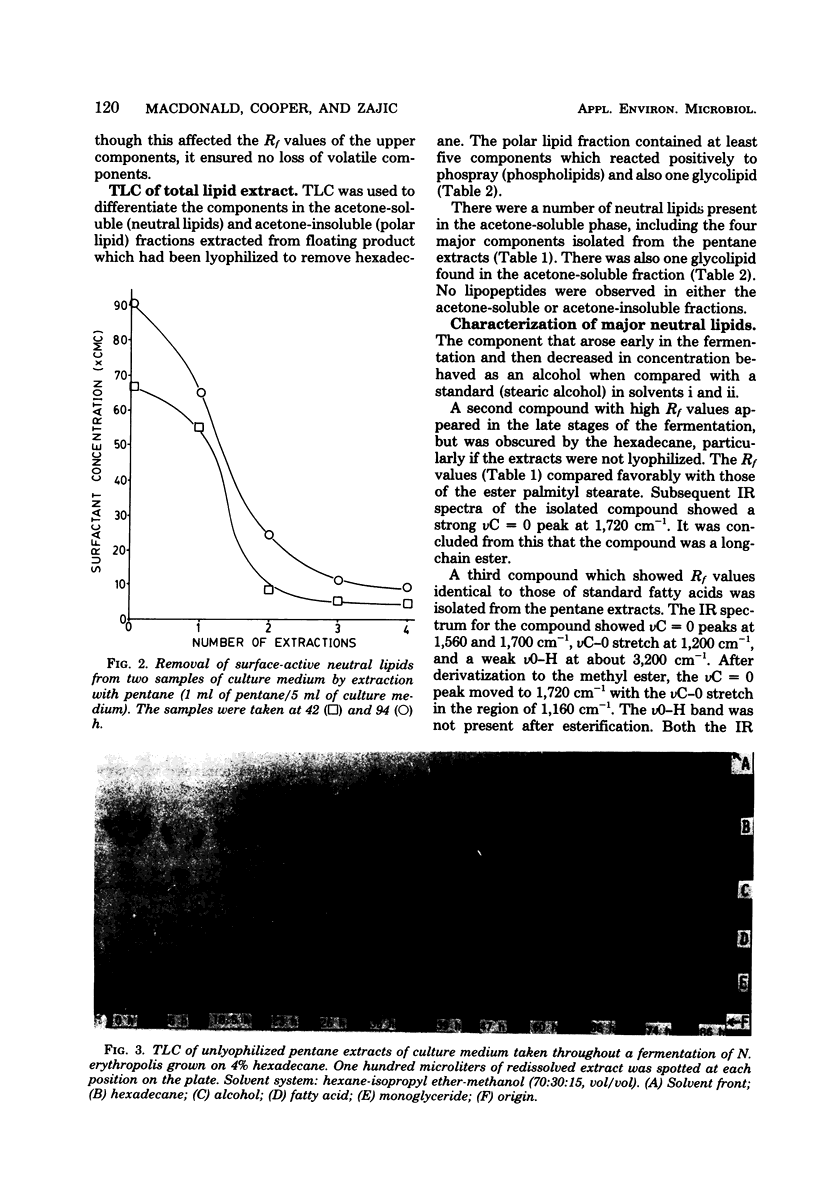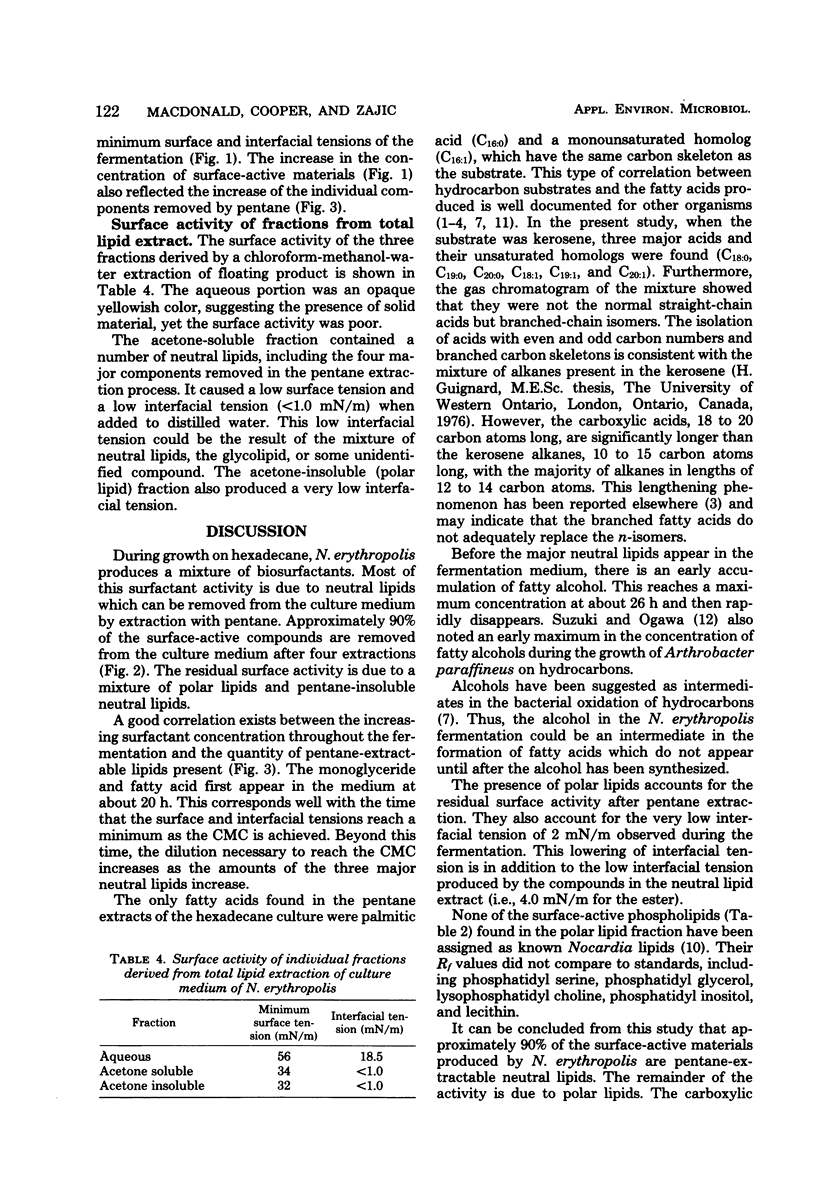Abstract
Nocardia erythropolis (ATCC 4277) was grown in a 28-liter fermentor on mineral salts medium and 4% hydrocarbon. Extraction of the neutral lipids with pentane removed approximately 90% of the surface activity of the culture medium. The residual surface activity of the culture medium was attributed to the polar lipid fraction which was not extracted with pentane. Analysis of the pentane extracts with thin-layer chromatography showed the presence of four major compounds. A fatty alcohol reached a maximum concentration in the early log phase of growth and then decreased to the end of the fermentation. A monoglyceride, an ester, and a fatty acid appeared during the log phase of growth and continued to increase until the end of the fermentation. The fatty acids isolated from the culture grown on hexadecane had a carbon skeleton with the same length as the substrate, with 70% of the component as the saturated acid and 30% as a monounsaturated homolog. When isolated from a kerosene culture, the fatty acids consisted of a number of homologs from C18 to C20, including branched-chain and unsaturated acids, reflecting the distribution of the branched-chain isomers in the substrate.
Full text
PDF






Images in this article
Selected References
These references are in PubMed. This may not be the complete list of references from this article.
- Cooper D. G., Zajic J. E., Gracey D. E. Analysis of corynomycolic acids and other fatty acids produced by Corynebacterium lepus grown on kerosene. J Bacteriol. 1979 Feb;137(2):795–801. doi: 10.1128/jb.137.2.795-801.1979. [DOI] [PMC free article] [PubMed] [Google Scholar]
- Farshtchi D., McClung N. M. Effect of substrate on fatty acid production in Nocardia asteroides. Can J Microbiol. 1970 Apr;16(4):213–217. doi: 10.1139/m70-039. [DOI] [PubMed] [Google Scholar]
- Gutierrez J. R., Erickson L. E. Hydrocarbon uptake in hydrocarbon fermentations. Biotechnol Bioeng. 1977 Sep;19(9):1331–1349. doi: 10.1002/bit.260190907. [DOI] [PubMed] [Google Scholar]
- Makula R., Finnerty W. R. Microbial assimilation of hydrocarbons. I. Fatty acids derived from normal alkanes. J Bacteriol. 1968 Jun;95(6):2102–2107. doi: 10.1128/jb.95.6.2102-2107.1968. [DOI] [PMC free article] [PubMed] [Google Scholar]
- RAYMOND R. L., DAVIS J. B. n-Alkane utilization and lipid formation by a Nocardia. Appl Microbiol. 1960 Nov;8:329–334. doi: 10.1128/am.8.6.329-334.1960. [DOI] [PMC free article] [PubMed] [Google Scholar]



